Enhancing Adaptive Training for Air Traffic Controllers with Neurophysiological Signals
‘NeuroAdapt’ brain-computer interface leverages EEG, EKG, and other neurophysiological signals in real time during active Air Traffic Control training
Aptima, Inc., a trailblazer in leveraging artificial intelligence and advanced analytics to enhance mission readiness, announced today that it has recently completed a $750,000 AFWERX Phase II Small Business Technology Transfer (STTR) award to develop a brain-computer interface that incorporates neurophysiological signals into an adaptive learning framework to enhance motor and cognitive skills for Air Traffic Controllers.
Air Traffic Control (ATC) is a vital function for the U.S. Air Force, ensuring the safety and efficiency of aircrew and ground personnel. ATC is cognitively demanding, sometimes likened to solving a puzzle: operators must actively track the three-dimensional position, speed, and attitude of multiple aircraft simultaneously, all while maintaining awareness of their destinations and objectives. This is a logistical problem requiring sharply honed cognitive skills in the domains of working memory, executive function, attention, spatial cognition, and stress management, as well as a social problem in which ATC operators must communicate effectively with pilots in their airspace to maintain collective situational awareness and ensure safe and efficient flow of traffic.
Air Force ATC operators receive only 72 days of technical training. Therefore, even incremental improvements to effectiveness and efficiency of ATC training programs can have a significant impact; advanced solutions are needed to enhance and accelerate ATC training to maximize mission readiness and to reduce personnel and material costs. Adaptive learning methods are evolving rapidly to meet these needs by tailoring training to the abilities of the learner. Adaptive models infer an individual’s current skill level and intelligently select training materials to help them progress to more advanced stages. The models are informed by behavioral data, that is, by performance on a training task. They do not, however, take into account the learner’s neurophysiological state. Especially in such a mentally demanding domain as ATC, neurophysiological biomarkers corresponding with cognitive and affective states are needed to provide crucial context, enabling deeper insights that generate recommendations for more optimal training policies.
To address these challenges, Aptima, Inc. and the University of Chicago developed NeuroAdapt, a brain-computer interface that incorporates neurophysiological signals into an adaptive learning framework, enhancing motor and cognitive skills for elite skill training. NeuroAdapt fuses training performance data with rich neurophysiological data to derive deep insights into the learner’s cognitive state. Aptima’s machine learning-backed adaptive learning algorithms then use this information to control training parameters in real time, tailoring the paradigm to the unique needs of the individual learner. We have devised a theory-based, data-driven approach to measure EEG, EKG, and other neurophysiological signals while the trainee is actively using the system.
Aptima’s Sensor-based Assessment Technologies
NeuroAdapt is a member of Aptima’s Sensor-based Assessment Technologies (SAT) portfolio of technologies that utilize signals from the brain and body to inform performance-optimizing solutions that accelerate learning and optimize human-machine teaming. SAT leverages a wide range of multimodal data, from neuroimaging devices such as EEG and fNIRS, to computerized software for email and cognitive task performance. With SAT, data-derived insights provide objective feedback about individual internal conditions and abilities that would otherwise go unnoticed. As a result, individuals, supervisors, and even computerized co-workers (systems-as-teammates, automated assistants) can make informed adjustments to enhance safety and efficiency.
Aptima welcomes the adoption or merging of your technology with one or more of our SBIR Topics. We are eligible for SBIR Enhancement funding, as well as TACFI and STRATFI awards, all of which are sole source.
For more information, please contact aptima_info@aptima.com.
U.S. Air Force photo by Airman 1st Class J. Zuriel Lee /Released




